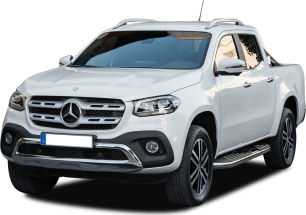The final example of the original Alpine A110 rolled out of the Dieppe plant in 1977, and despite more than four decades separating it from this newcomer, the 2019 A110 is effectively a new-generation version.
Much more than a tip of the hat to a special predecessor, the new A110 perfectly updates the distinctive, purposeful look of its not-so-ancient ancestor.
In fact, head of the A110 design team, Antony Villain says, "We wondered; if the A110 never went away, if this new car was the sixth or seventh generation A110, what would it look like?"
Appropriately finished in a very French shade of 'Alpine Blue', our test example was one of 60 'Australian Premiere Edition' cars, and the design is full of intriguing details.
At just under 4.2m long, 1.8m wide, and only a touch over 1.2m high the two-seat A110 is compact to say the least.
It's raked LED headlights and round fog lights are recessed into the markedly curved nose in a complete and unabashed reload, with circular LED DRLs accentuating the throwback effect.
The overall look of the carefully scalloped bonnet is also familiar, with a huge under-bumper grille and side ducts creating an air curtain along the front wheel wells to finish off the treatment with a focused, technical touch.
A steeply raked windscreen runs up to a small turret with a broad channel running down its entre, and the flanks are narrowed by a lengthy, aero-influenced indent.
A case study in tightly wrapped surfacing, the rear-end is equally taut, with elements like 'X-shaped' LED tail-lights, tightly curved rear screen, single central exhaust outlet and aggressive diffuser continuing the expressive design theme.
Aero efficiency is a major influence, and as well as the diffuser careful inspection of the rear side window reveals a neat duct at its trailing-edge funnelling air to the mid/rear-mounted engine, and the underbody is smoothed near flat. An overall drag co-efficient of 0.32 is impressive for such a small car.
The A110 also proudly wears its French heart on its sleeve, with an enamel version of Le Tricolore attached to the C-pillar (and various points around the interior).
Eighteen-inch Otto Fuchs forged alloy rims fit the car's style and proportions perfectly with body-colour matching blue brake calipers poking through the delicate split-spoke design.
The interior is all business with racy Sabelt one-piece bucket seats setting the tone. Trimmed in a combination of quilted leather and microfibre (which extends to the doors) they are separated by a floating, flying buttress-style console housing key controls above and a storage tray (including multi-media inputs) below.
Highlights include cool body-colour panels in the doors, a Ferrari-like push-button gear selection set-up, slender alloy manual shift paddles attached to the steering column (not the wheel), matt carbon-fibre accents on the console and around the circular air vents, and a 10.0-inch TFT digital instrument cluster (which morphs to suit Normal, Sport or Track modes).
The A110's chassis and body are made from aluminium, with a brushed form of that material adorning everything from the pedals and perforated passenger footrest to multiple dash trim pieces.
Quality and attention to detail is outstanding to the point that just getting in the car feels like a special occasion. Every time.





